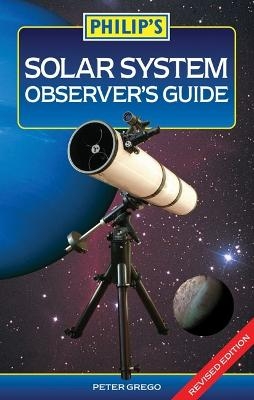
Philip's Solar System Observer's Guide
Seiten
2010
Philip's (Verlag)
978-1-84907-066-9 (ISBN)
Philip's (Verlag)
978-1-84907-066-9 (ISBN)
- Titel ist leider vergriffen;
keine Neuauflage - Artikel merken
How to view the Sun, Moon, planets and their satellites, asteroids, comets, meteors and aurorae. For users of small to medium telescopes and binoculars. Lists the best observing dates and times for the planets and selected asteroids, plus data for meteors and eclipses. Suitable for use anywhere in the world.
Philip's Solar System Observer's Guide is a practical and colourful introduction to our 'corner' of the Universe. It describes how to observe not only the planets but also the Moon, Sun, comets, meteors, asteroids and other objects found within our Solar System. It is ideal for users of binoculars and small- to medium-sized telescopes.Each chapter is devoted to a different object, and in each case the author explains how to find the object, how to observe it, what you can expect to see and how you can record your observations. The chapters are illustrated with digital images, photographs and sketches obtained by both amateur and professional astronomers.Dates are provided for special events, such as eclipses, transits, oppositions and so on, where appropriate, so that the reader can make the most of the best opportunities available. Where specialist equipment is required - for example, when observing the Sun - this is clearly explained.A separate chapter provides an overview of the equipment and techniques needed by most Solar System observers, and includes tips on dealing with light pollution and poor seeing conditions.
Philip's Solar System Observer's Guide is a practical and colourful introduction to our 'corner' of the Universe. It describes how to observe not only the planets but also the Moon, Sun, comets, meteors, asteroids and other objects found within our Solar System. It is ideal for users of binoculars and small- to medium-sized telescopes.Each chapter is devoted to a different object, and in each case the author explains how to find the object, how to observe it, what you can expect to see and how you can record your observations. The chapters are illustrated with digital images, photographs and sketches obtained by both amateur and professional astronomers.Dates are provided for special events, such as eclipses, transits, oppositions and so on, where appropriate, so that the reader can make the most of the best opportunities available. Where specialist equipment is required - for example, when observing the Sun - this is clearly explained.A separate chapter provides an overview of the equipment and techniques needed by most Solar System observers, and includes tips on dealing with light pollution and poor seeing conditions.
Peter Grego is Director of the Lunar Section of Britain's Society for Popular Astronomy (SPA) and the Topographical Coordinator of the British Astronomical Association (BAA) Lunar Section. He writes and illustrates the monthly MoonWatch page in Astronomy Now magazine and is the expert on observing for Sky at Night magazine's Astro Answers.
| Erscheint lt. Verlag | 19.4.2010 |
|---|---|
| Verlagsort | London |
| Sprache | englisch |
| Maße | 126 x 198 mm |
| Gewicht | 402 g |
| Themenwelt | Sachbuch/Ratgeber ► Natur / Technik ► Weltraum / Astronomie |
| ISBN-10 | 1-84907-066-0 / 1849070660 |
| ISBN-13 | 978-1-84907-066-9 / 9781849070669 |
| Zustand | Neuware |
| Haben Sie eine Frage zum Produkt? |
Mehr entdecken
aus dem Bereich
aus dem Bereich
Perspektiven auf die Menschheit
Buch | Hardcover (2024)
Klett-Cotta (Verlag)
25,00 €
auf der Suche nach neuen Planeten und außerirdischem Leben
Buch | Hardcover (2024)
Droemer (Verlag)
24,00 €


